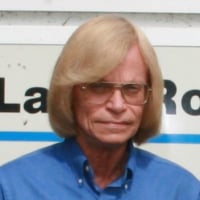Welcome! Here are the website rules, as well as some tips for using this forum.
Need to contact us? Visit https://heatinghelp.com/contact-us/.
Click here to Find a Contractor in your area.
If our community has helped you, please consider making a contribution to support this website. Thanks!
Beckett AFG oil burner puff of soot at startup
Options
Comments
-
140,000 btu DOE is output and is based on 80% of input so the input would be 175,000 max. 170,000 divided by 140,000 = 1.25 gal. The best way to get 1.25 gal is with a 1,00 gph nozzle and 140 to 150#. Every flame retention burner has a solid air pattern. Can't imagine why anyone uses any nozzle but a solid.
Well for one reason is just because a nozzle says its solid or hollow doesn't necessarily mean it is.
When it comes to following manufacturers spec or following actual testing in the field, I am pretty sure testing wins every time.0 -
Open up your window and yell (or send a PM)...I'm in BroomallJay4334 said:@STEVEusaPA a few people have mentioned you for this area, where are you located?
There was an error rendering this rich post.
0 -
Go for it Steve. I will be back in that area in March.0
-
I'll most likely see you at your class in Philly. Negotiating vacation with my wife!captainco said:Go for it Steve. I will be back in that area in March.
There was an error rendering this rich post.
0
Categories
- All Categories
- 87.3K THE MAIN WALL
- 3.2K A-C, Heat Pumps & Refrigeration
- 61 Biomass
- 429 Carbon Monoxide Awareness
- 120 Chimneys & Flues
- 2.1K Domestic Hot Water
- 5.8K Gas Heating
- 115 Geothermal
- 166 Indoor-Air Quality
- 3.7K Oil Heating
- 77 Pipe Deterioration
- 1K Plumbing
- 6.5K Radiant Heating
- 395 Solar
- 15.7K Strictly Steam
- 3.4K Thermostats and Controls
- 56 Water Quality
- 51 Industry Classes
- 50 Job Opportunities
- 18 Recall Announcements

